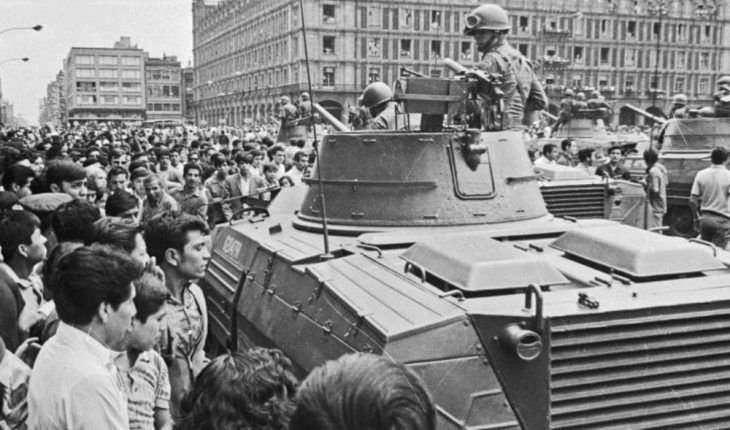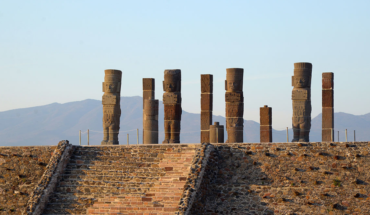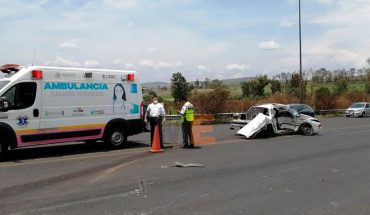
CDMX.- In the history of Mexico the massacre against students was marked on October 2, 1968 which was known as “La Matanza de Tlatelolco”. It all originated in a dispute between students of a social movement of which were students of the National Autonomous University of Mexico (UNAM) and the National Polytechnic Institute (IPN) where teachers, intellectuals, housewives, workers and professionals from Mexico City also participated.
Stay informed about what matters most to you
Get the most relevant news of the day in your e-mail
Thank you for subscribing!
Check your inbox to confirm your email and start getting the latest news
Take advantage and take the next step
Get our news alerts so you don’t miss anything
Receive notifications
Not bad! You’ve subscribed to notifications
Set up and choose your preferences
Set up notifications
Enter your e-mail
Subscribe
Subscribing involves accepting the terms and conditions
Not bad! You’ve subscribed to notifications
Set up and choose your preferences
The movement was suppressed by the government of Mexico by the Tlatelolco massacre on October 2, 1968 in the Plaza de las Tres Culturas.
The genocide was committed against the peaceful demonstration by the Mexican Army and the paramilitary group Batallón Olimpia, at the time Gustavo Díaz Ordaz was the president of Mexico and according to the conclusions of the Mexican Prosecutor’s Office, ordered the systematic repression of the Movement of 68 in Mexico causing an undetermined number of dead, wounded and detained. The story began with the student fight in central Mexico City and the capital police riot group, known as the Grenadier Corps, which intervened to calm the quarrel, where dozens of students and witnesses of the fight were beaten and chased to schools where they sought refuge. It should be noted that at this time many journalists from all over the world had arrived in Mexico as Mexico was the venue for the Olympic Games that would begin on October 12, so the Mexican government was interested in the country’s image out of peace and cordiality. The days were coming to start the 68th Olympics in Mexico that would open on October 12, the day of the discovery of America (in Mexico “The Day of the Race”).
History of the 1968 student movement
On 22 July 1968, a confrontation took place between students from vocationals 2 and 5 of the IPN and the Isaac Ochoterana high school, incorporated into UNAM, the police force of grenadiers dissolved the mob and several students were arrested. It was July 23, 1968, at the time Mexican police had a reputation for committing abuse, but the aggression against the students was excessive. Four days later, on 27 July, UNAM and IPN students organized a march against violence by police officers. There was a peaceful walk to which members of the Mexican Communicative Party joined, which was suppressed by the grenadiers. From that moment on, a rapidly growing student movement began in just weeks, other universities joined UNAM and the IPN by going on strike. Authorities reported burnt buses and the explosion of explosive devices, dozens of young people were arrested and tankers and dozens of military personnel began to be deployed at the Central Square Zocalo. The Mexican Army occupied the UNAM and IPN facilities, but failed to contain the grouped movement in the National Strike Council (CNH). On August 4, 1968, the student movement produced a petition specification that invalidated that of the National Federation of Technical Students (FNET) and contained the following points:
Freedom to political prisoners.
Repeal of articles 145 and 145a of the Federal Criminal Code – which instituted the crime of social dissolution and served as a legal instrument for the aggression suffered by students.
Disappearance of the Grenadier Corps.
Dismissal of police chiefs.
Compensation to relatives of all those killed and injured since the start of the conflict.
Disrefidation of responsibilities of officials guilty of bloody events.
In September a rally was held in Tlatelolco, called “The Manifestation of the Torches” and on the 13th “The March of Silence” was held where the protesters marched with handkerchiefs in their mouths. On September 15, 1968, on the occasion of the anniversary of the War of Independence, Heberto Castillo gave the Cry of Independence on the esplanade of the University City of UNAM, which caused the president to be furious and three days later, on September 18th the army invaded the University City.The Vocational Building 5 was meddled by police commandos dressed as civilians, causing destruction, which caused a series of violent clashes between students and grenadiers in the areas of the Hull of St. Thomas.Students kidnap buses and strategically place them around schools and open ditches in order to prevent the passage of police vehicles. At 19 hours, 1,500 grenadiers arrived at the site on passenger buses and immediately surrounded the Hull facilities, the polytechnics set fire to the trucks with which they had blocked the streets surrounding the Hull and from the schools began dropping Molotov bombs at the policemen. On 17 September, five suspects were arrested in Tlatelolco when they were found to be carrying weapons and ammunition in that housing unit. On October 1, 1968, he retired from UNAM and IPN.2 October 1968: The Tlatelolco Massacre
On the afternoon of October 2, 1968, a day after the army left the UNAM campus, thousands of people gathered in the Three Cultures Square in Tlatelolco.In the meantime, the army was watching over as all the demonstrations that occurred in that year, the government was afraid that the Tower of the Secretariat of Foreign Affairs would be assaulted , so they had helicopters from the police and the army. Members of the Olympia Battalion, whose members were dressed as civilians with a white handkerchief or glove in their left hand, infiltrated the demonstration until they reached the third floor of the Chihuahua building where the movement’s speakers and several journalists were. At 5:55 p.m., two red flares were fired from the tower of Tlatelolco and at 6:10 flew over the square a helicopter from which they fired flares, the first green and the second red, allegedly as a signal for the snipers of the Olympic Battalion stationed in the Chihuahua buildings, April 2, September 15, ISSSTE 11, Revolution of 1910 and the Church of Santiago , as well as several members of the Olympia Battalion parapeted in the Chihuahua departments and in the third floor corridor. They opened fire on the protesters and military guarding the place to make the latter believe that the students were the aggressors. The military, in its attempt to defend themselves, repelled “the aggression of the students”, but in the face of confusion, the shootings were not directed at their assailants, but at the multitude of protesters who were in Tlatelolco Square.Many protesters managed to escape the shooting and hid in some departments of the surrounding buildings, but did not stop the members of the army , who without a warrant, broke into the departments of the Tlatelolco Unit buildings to capture the protesters. Hours later, the square was full of corpses and injured people, the students were taken to squares to two places: at the gates of the elevators of the Chihuahua building, where they were undressed leaving only in underwear and beaten, and to the former convent located next to the Church of Santiago-Tlatelolco, where approximately 3000 detainees gathered. Others were stripped naked on the walls of the convent, where a month later bloodstains could still be seen on the walls that were white. Journalists were searched and confiscated their used and virgin scrolls, some were even undressed and others injured. The square was cleaned by the fire brigade and the troop of soldiers remained there until October 9. Several witnesses claim that during that period, the Olympic Battalion disguised itself as employees of light and water so that students can be easily searched. The detainees were sent to various prisons in Mexico City and the ringleads were sent to Military Camp Number 1 or lecumberri’s “Black Palace” as well as to Military Camp 1.To date the exact number of dead and injured is unknown, but according to the Mexican government it stated that in 1968 there were only 20 dead and three years later , the writer Elena Poniatowska, in the book “The Night of Tlatelolco”, published an interview of a mother searching among the corpses for her son and revealed that she had counted 65 bodies in one place. The English journalist, John Rodda, in his investigations, interviewed survivors and witnesses of events in hospitals calculated that the balance was 325 and years later, in a second investigation, the number would reduce to 250.Authors like Jorge Castañeda, believe that all use of public force began to be magnified by the population after the operation against students in Tlatelolco, the author argues that about 68 students and a soldier died. The BBC in London, in a 2005 dimension, the original news office of 2 October 1968 and after the CIA’s extensions were known in fact, argues that the number of victims ranges from 200 to 300, and that the bodies were quickly removed in garbage trucks. In general, estimates are calculated in a range 200 to 1,500, witnesses claim that there were cranes collecting hundreds of bodies in their path and then being dumped and incinerated. On October 3, General Marcelino García Barragán, then secretary of the National Defense, gave a press conference, in which he justified the intervention of the army.” A device was ordered to prevent students from going from the Tlatelolco rally to the Hull of St. Thomas, the army intervened in Tlatelolco at the request of the police and to quell a shootout between two student groups”The general was singled out as responsible and did not decree the state of siege and threatened to act with the same energy if “more outbreaks of turmoil appear.” The soldiers continued to search the buildings near the Three Cultures Square in search of students who had taken refuge in them during the previous day’s fray. The Olympic Games in Mexico
On October 12, 1968, Mexico’s President Diaz Ordaz was present at the opening of the XIX Olympic Games, dubbed the “Olympics of Peace”; during the ceremony, a group of protesters threw on the box where the president was a dove-shaped black papalote for the repudiation of the October 2 massacre.





